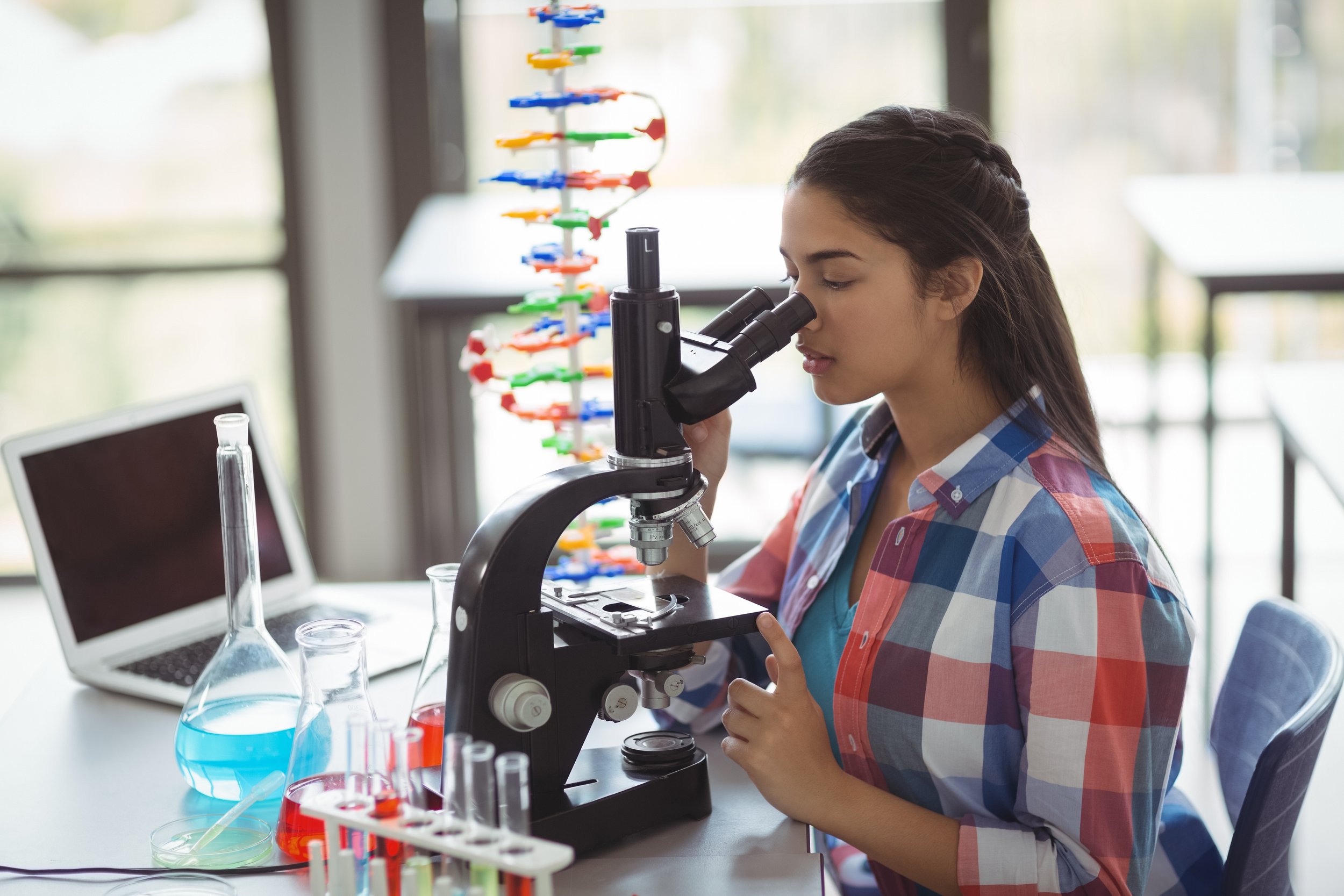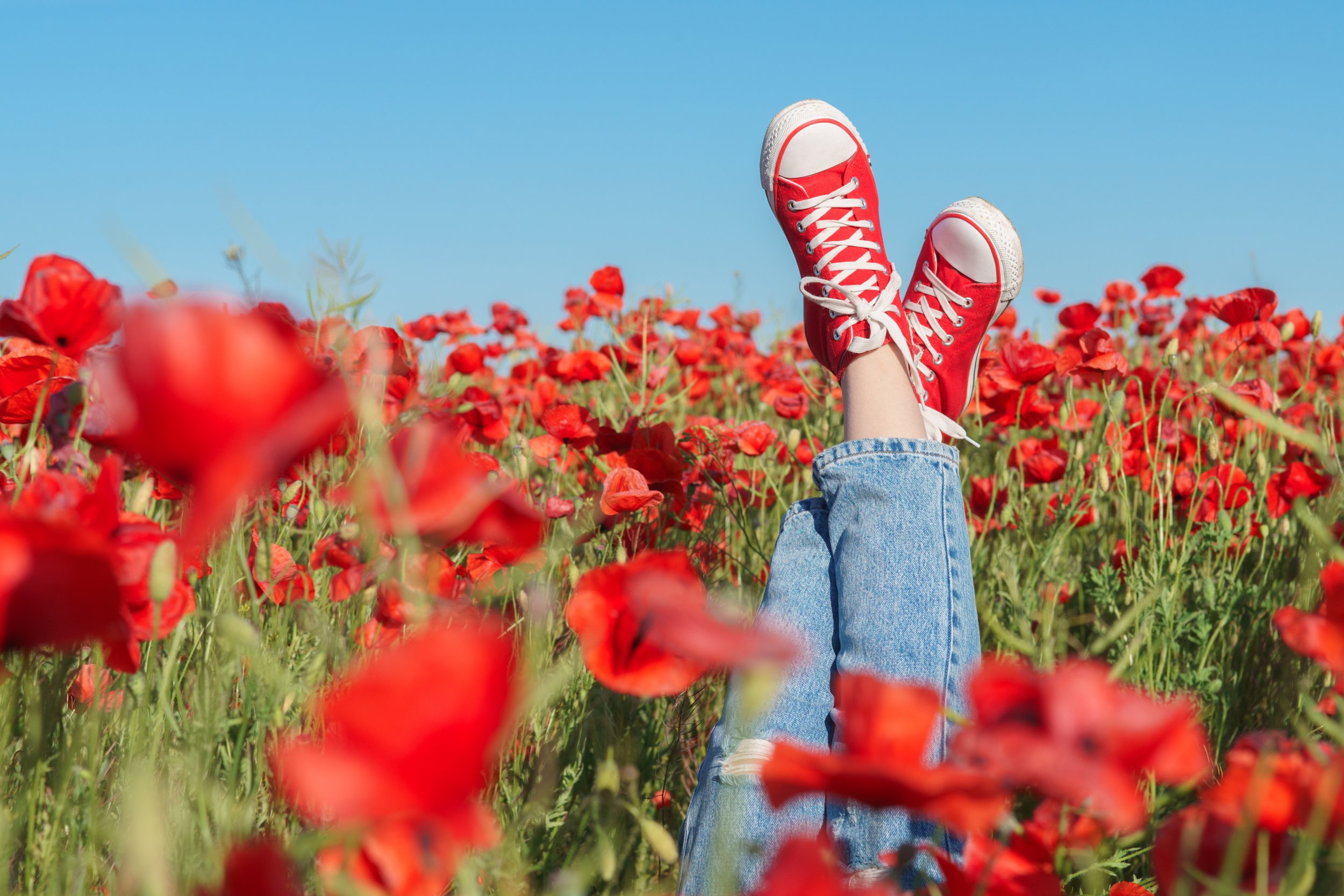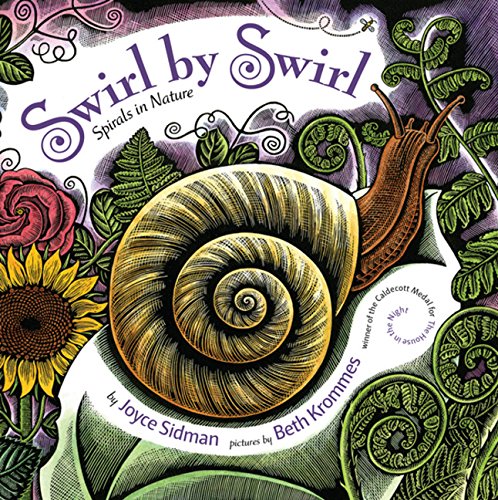Homeschool Reading List: The Big Bang Theory
Dig into the science behind the Big Bang Theory with a book for homeschool scientists at every level.
Dig into the science behind the Big Bang Theory with a book for homeschool scientists at every level.
Cosmologist and theoretical physicist George Gamow and his fellow scientists first proposed the Big Bang Theory seventy years ago, and their ideas about how the universe began remain our best-guess understanding of the universe’s origins. It’s a fascinating theory to dive into with your homeschoolers, whether they’re young or preparing for college.
Resources for Young Scientists
These resources are appropriate for elementary and early middle school students.
The Everything Seed: A Story of Beginnings by Carole Martignacco
Framed as an origin myth, this joyful picture book explains the basics of the Big Bang theory and creates a creation story that’s based in actual science.
Bang! How We Came to Be by Michael Rubino
Focusing on the story of evolution from the singularity that sparked the universe we know to the single-cell organisms that would eventually become us, this picture book is an exuberant celebration of science.
Older Than the Stars by Karen Fox and Nancy Davis
“You are older than the dinosaurs. Older than the earth.” So begins this scientific origin story of the universe, which explains how the larger cosmos and human beings within it came into existence.
The Birth of the Earth by Jacqui Bailey and Matthew Lilly
Part of the Cartoon History of the Earth series, this comic book exploration of the universe’s origins is great for beginning readers. (The timeline is especially useful for making sense of cosmic time.)
Resources for Older Scientists
Use these resources when your students are ready for more sophisticated science.
NASA’s Wilkinson Microwave Anisotropy Probe website walks you through the cosmology, theory, and concepts behind the Big Bang theory in an organized (and continuously updated) series of pages. It makes a terrific orientation and an informative jumping-off point for more in-depth studies.
The Book of the Cosmos: Imagining the Universe from Heraclitus to Hawking by Dennis Richard Danielson
Cosmology has fascinated scientists since the beginning of written history, and this collection of writings chronicles that fascination and its developing understanding of the universe through human history. (If you want to jump straight to the Big Bang, go directly to chapter 67.)
Big Bang: The Origin of the Universe by Simon Singh
Singh brilliantly humanizes the Big Bang, focusing on the (sometimes funny, often surprising) stories of the scientists who pieced together the universe’s cataclysmic beginnings from research, observation, testing, and the occasional sci-fi movie.
The Left Hand of Creation: The Origin and Evolution of the Expanding Universe by John D. Barrow
When you’re comfortable with the basics, dive deep into this dense, provocative exploration of particle physics that asks (and offers some possible answers for) big questions about the origin and development of the universe, the nature of time, and the connections between the origins of the universe and our own lives, right down to our genetic structure.
How can we do a better job homeschooling science?
Homeschooling science can get more complicated as students get older. A flexible plan, clear goals, and a great secular science curriculum can make it a little easier.
Homeschooling science can get more complicated as students get older. A flexible plan, clear goals, and a great secular science curriculum can make it a little easier.
Science always seems to fall by the wayside for us. We start out strong with a different curriculum every year, but by the winter holidays, we’re months behind and barely logging any science hours. The experiments end up taking too much prep time or they’re not well organized, and the curriculum either ends up being boring or not giving enough information so that I am always having to spend way too much time tracking down resources or books. I kept thinking we’d figure it out eventually — but now we’re starting 7th grade, and science can’t keep being optional. Do you have any recommendations for finding a curriculum or a routine to make science easier?
Honestly, this is a common problem — science may be the hardest subject to pull off entirely as a homeschool class once you move past the elementary years. A good science class requires two things: information, which homeschoolers have in spades; and the ability to test that information with critical thinking. This is where things get hard: Even if a homeschool parent has a strong science background, running a science lab in your laundry room can be challenging.
The easiest way to solve this is with strategic outsourcing. If you have a homeschool coop with a science lab or — for high school students — an accessible dual enrollment program at a convenient college, in-person science with a small group is the ideal learning environment. If in-person classes aren’t available, Next Level Homeschool has solid science classes for middle and high school. For older homeschoolers, I always recommend spending your budget first on the subject your kid is most excited about and second on science classes with a lab component.
If you’re committed to finding a curriculum to use at home, I recommend focusing on one subject at a time — you probably will not find one good curriculum creator that includes great at-home biology, great at-home chemistry, and great at-home physics, so you will likely need to shop around. You might look at the options at Conceptual Academy, which are video-centric and designed by science educators but allow students to work at their own pace. They’re similar to classes you’d get in traditional schools, but you can supplement with fun readings and activities to keep things interesting. Similarly, Oak Meadow offers major middle and high school science classes in a traditional school format, with all supplies included. If you love Real Science Odyssey, Blair Lee has shared tips at SEA Homeschooler conferences for expanding these curriculum into high school-level spines.
As far as finding a routine that works goes, start with science your next academic year. In other words, start your homeschool year with just science, doing a little every day, and gradually adding the other subjects for the year around your science classes. It may not come naturally to your existing routine, but you can make it part of your homeschool rhythm.
Secular Science Curriculum Review: Microbiology
Big questions and lots of points of entry make this curriculum great for secular homeschool middle school science.
Big questions and lots of points of entry make this curriculum great for middle school science.
If you ask any homeschooler what the hardest subject to homeschool as kids get older is, we’re probably all going to mention science. For one thing, secular science curriculum is hard to find — I know I am not the only person who’s been surprised in a bad way by a curriculum that seemed fun until it suggested that evolution was “just” a theory. For another, good science curriculum has to cover a lot of bases: It needs to provide facts, preferably in a fun and engaging way; it needs to guide students through labs and activities that are genuinely homeschool-possible — most of us won’t have multi-station labs in our dining rooms; and it needs to build understanding through asking questions, reinforcing key concepts, and encouraging curiosity. There are a lot of programs that do some or all of this for elementary students, but by middle school, the options are few and far between. So I am happy to report that there’s a great new option for middle school science that does all of these things: Blair Lee’s Microbiology.
Microbiology is the study of all the tiny living things that make up the world around us: bacteria, viruses, microscopic fungi, protozoa, algae, and archaea — all the things we need a microscope to get a good look at. Kids who plan to study biology and chemistry in high school will benefit from this deep dive into the microscopic science of life. And it really is a deep dive: Each of the 12 chapters includes a variety of access points for students, including informational text to introduce big ideas, videos (created specifically for the course) to illustrate important concepts, labs that encourage students to get hands-on with scientific modeling, problem sets to practice concepts, and discussion and writing questions to push students to explain their understanding and develop their own ideas. Because there are so many ways to engage with the information, it’s easy to adjust lessons to meet your child wherever they are.
The best part about this curriculum is the author’s obvious love for her subject. She thinks microbiology is super-cool, and kids can’t help but be caught up in her enthusiasm. I’m a big fan of science curriculum that operates more like an incubator for inspiring big thinking than a checklist of things to memorize, so I especially appreciated the way each chapter is centered around exploring questions rather than just learning answers.
I think this curriculum hits the middle school science sweet spot: Microbiology steers kids toward big questions and interrogative science investigations while still providing lots of scaffolding and hands-on fun. It’s designed as a one-semester class, but you could easily stretch it to a full year by adding some books. (I’d start with A Planet of Viruses or I Contain Multitudes: The Microbes Within Us and a Grander View of Life, both of which make great readalouds.) Though the microscope labs for this course are optional, I think it’s worth investing in a microscope to get the full experience — consider teaming up with other homeschoolers to purchase a microscope for your co-op or homeschool group if several of you are looking for science resources. Microbiology feels like a just-right stepping stone between elementary school introduction to biology and high school-level biology classes.
A great science class reminds students that science isn’t something that’s just a list of facts to memorize but an ongoing process of discovery we can all participate in. Science is never “finished” because we’re always discovering new things. Microbiology is a vivid, compelling reminder that everybody who studies science IS a scientist.
Blair is a friend of home/school/life and of this reviewer, but that relationship has not affected my opinion of Microbiology.
Great Nature Books for Your Spring Library List
Fill your library bag with books that will get your secular homeschoolers excited about spring — whether the weather's in the right mood or not.
Nature study isn’t just for the littles! Greener pages inspire greener pastures for middle and high school homeschoolers, too. These nature books will make you want to head outdoors, whether you’re looking for a new project to take on or just for a little motivation to make nature time part of your everyday routine.
THE STICK BOOK: LOADS OF THINGS YOU CAN MAKE OR DO WITH A STICK by Fiona Danks and Jo Schofield
Who knew a stick had so much potential? This book makes it clear why the humble stick was inducted into the National Toy Hall of Fame and gives kids lots of ideas for creative outdoor play. Tweens and teens can challenge each other to craft the best stick-based creations.
THE KIDS’ OUTDOOR ADVENTURE BOOK by Stacy Tornio and Ken Keffer
There are 448 ideas for playing outside in all seasons in this handy tome — that’s more than one idea for every day of the year. Kids will enjoy this book, but it’s also a good pick for parents who aren’t sure how to help their children ease into free play or make the transition from little kid outdoor to adventure to big kid outdoor fun.
OWL MOON by Jane Yolen
Your kids will want to take a nighttime owl walk after reading this poetic story about a child’s owling adventure with her father. A lot of us start to phase out these kinds of activities as kids get older, but this is actually the time when these activities can be the most magical.
AN EGG IS QUIET by Dianna Hutts Aston
An egg may not have a voice, but it’s still pretty interesting — a fact that this gorgeously illustrated picture book makes clear as it introduces readers to more than 60 different eggs, from fossilized dinosaur eggs to tubular dogfish eggs to giant ostrich eggs. If you’re studying biology, this is a fun springtime surprise to pull out for older students.
THE NATURE CONNECTION: AN OUTDOOR WORKBOOK FOR KIDS, FAMILIES AND CLASSROOM by Clare Walker Leslie
Clare Walker Leslie’s book about nature journaling changed the way I look at the natural world forever, and her follow-up guide, full of activities and ideas for experiencing and exploring nature with your family, is a must-have. I used this book when my kids were little and pulled it out on a whim when the oldest was finishing up middle school — it was like an entirely new book! Definitely worth revisiting even if you used it for elementary homeschool nature study.
SWIRL BY SWIRL: SPIRALS IN NATURE by Joyce Sidman
A Newberry Honor poet and Caldecott medalist illustrator team up for this beautiful book about spirals in nature. This is a great book to inspire kids to look for shapes and patterns in the natural world and to get creative with how they think about nature study.
DIARY OF A CITIZEN SCIENTIST: CHASING TIGER BEETLES AND OTHER NEW WAYS OF ENGAGING THE WORLD by Sharman Apt Russell
Citizen science has big appeal for kids who want to be a part of something bigger, and this book, from a non-professional science fan who stalks tiger beetles, catalogs galaxies, and participates in other citizen science projects, makes an engaging read for older kids. (Bonus: You can find tons of citizen science projects to participate in if you’re feeling inspired.)
THE SENSE OF WONDER by Rachel Carson
Carson’s book, published in 1956, is hauntingly prescient, reflecting the importance of nature through a series of everyday outdoor experiences with her nephew along the Maine coast. This is a great book for reminding tweens and teens that their nature observations are part of bigger way of experiencing the world.
ALL THE WILD WONDERS: POEMS OF OUR EARTH edited by Wendy Cooling
Delicate watercolor paintings accompany nature poems by Christina Rossetti, Ogden Nash, John Agard, Thomas Hardy, and more. Kids who prefer writing to hiking may find that nature-inspired poetry is the perfect way to make outdoor time feel inspiring.
WALDEN by Henry David Thoreau
“I went to the woods because I wished to live deliberately, to front only the essential facts of life, and see if I could not learn what it had to teach, and not, when I came to die, discover that I had not lived.” Thoreau’s classic work about the importance of living a life connected to the natural world still resonates today, and teen readers will probably be both inspired by Thoreau’s ideas about a “simple” life and ready to critique some of the class and gender dynamics that are happening behind the scenes of that simple life.
THE CLOUDSPOTTER’S GUIDE: THE SCIENCE, HISTORY, AND CULTURE OF CLOUDS by Gavin Pretor-Pinney
Learn more about morning glory, cumulus, nimbostratus, and all those other clouds in this odd but awesome little book about the science, history, art, and pop culture significance of clouds. We spent hours making cloud charts and painting clouds in our high school nature study, and it was a welcome, meditative moment we looked forward to in our busy homeschool routine.
THE KID’S BOOK OF WEATHER FORECASTING: BUILD A WEATHER STATION, ‘READ THE SKY,’ AND MAKE PREDICTIONS! by Mark Breen and Kathleen Friestad
Who needs a weather unit study when you can build your own weather machine in the backyard? We tested this book out in elementary school, but my daughter was really too young to take ownership of the projects. Middle school proved to be perfect timing for us.
ROOTS, SHOOTS, BUCKETS & BOOTS: GARDENING TOGETHER WITH CHILDREN by Shannon Lovejoy
Lovejoy’s mix of practical information (you can start a garden with your kids using the information in this book) and inspiration (including a moon garden of night-blooming flowers) makes this an ideal volume for would-be gardeners of all ages.
TAKE A BACKYARD BIRD WALK by Jane Kirkland
Part of the Take a Walk series, this practical and engaging book helps kids develop the skills they need to notice and identify birds in their own neighborhoods. If you are just getting started with birdwatching, it’s not too late! And books like this make it much easier to let your tweens and teens lead the way.
A SEED IS SLEEPY by Dianna Hutts Aston
Sylvia Long’s accurate, detailed illustrations are a big part of what makes this book such a great addition to your nature library. Kids will learn about all kinds of seeds, from the ones light enough to float on the breeze to ones that can weigh up to 60 pounds. I think this would be a great book to include as part of a middle grades botany unit.
AND THEN IT’S SPRING by Julie Fogliano
Waiting and watching for signs of spring can sometimes feel like an endless process, a fact that Fogliano beautifully captures in this simple story. We read this book out loud every year when we’re on the lookout for those first indicators that winter is on the way out.
WHAT THE ROBIN KNOWS: HOW BIRDS REVEAL THE SECRETS OF THE NATURAL WORLD by Jon Young
A naturalist explores the language of birdsong in this book that manages to be both thoughtful and practical advice for birders. This is the kind of book that appeals to kids who explore their world like nature detectives, putting together clues and making deductions about how the world works.
SPRING: AN ANTHOLOGY FOR THE CHANGING SEASONS edited by Melissa Harrison
This tribute to British springtime includes spring-themed writings by Chaucer, Orwell, Hopkins, Larkin, and more. It’s a great gateway to comparative literature, exploring tone and mood, or digging into creating setting in literature — and it’s fun to read, too.
Why Do We Do Science Experiments Someone Else Has Already Done?
There’s value in repeating science experiments other people have already done in your homeschool, but don’t forget to make time for your own science questions, too.
There’s value in repeating experiments, but don’t forget to make time for your own science questions, too.
One of the great things about the rise of the Internet is that you can find any science experiment on YouTube.
Sometimes, I’ll queue up a few versions to show my kids before we tackle an experiment at home. This is handy: We can see how the experiment is supposed to look, so that if something goes wrong, it’s easier to troubleshoot. It also gives the kids an idea of what to expect, which helps them focus on paying attention during the different steps of the experiment. And it’s fun to feel like part of a community of people doing the same experiment — that’s one of the things I miss being a homeschooler instead of a science teacher these days.
But a few weeks ago, when I started another video for a jelly bone experiment we were doing with the Thanksgiving leftovers, my son — he’s 11 — said, “What’s the point?”
“What?” I said.
“We’re not really experimenting to see what happens,” he said. “We already know. It’s already on YouTube like a hundred times. What’s the point?”
I hesitated. There IS a point to repeating experiments — it’s called science. We repeat experiments because every experiment doesn’t work out perfectly, and different scientists may get different results. If we repeat an experiment, we can see whether the results are always true, or sometimes true, or only true once every leap year.
Doing experiments someone else has already done also helps us build our science toolkit. That’s why those YouTube videos are so useful. When we can see how someone else does an experiment, we can develop a good lab technique — and, if things go wrong, seeing where other people went right can help us redo the experiment more successfully.
And, of course, there’s always a chance that repeating an experiment may teach us something new. We could discover something no one else did before. True, that’s unlikely when we’re doing the same strawberry DNA experiment every 5th grader in the country does in science class, but it’s always possible.
All of those are good reasons for repeating experiments, and I started to explain them to my son. Later, I did talk about them. But I didn’t answer him then because I realized that he was asking a scientist’s question.
“That’s true,” I said. “What’s a science question you think we should answer?”
And just like that, our science routine changed. We still do experiments where we know what happens, but I also make a point to do experiments based on our own real-life questions. We experimented to see what ants do when it rains and whether people are more likely to use a trash bin in the park if it has a white bag versus a black bag. Because repeating experiments is important but so it encouraging scientific curiosity.
Misty Heaslet is a middle school science teacher turned homeschool mom. She lives in western North Carolina.
Epidemic!: A Science of Infection Reading List
It's flu season, and we've got a reading list of historical fiction and nonfiction to help you explore epidemics past in your secular homeschool.
It’s flu season, and we've got a reading list of historical fiction and nonfiction to help you explore epidemics past in your secular homeschool.
It’s been more than a century since Mary Mallon (infamously known as Typhoid Mary) was arrested and imprisoned for the second and final time for spreading typhoid through her work as a cook, but 2014’s Ebola crisis and 2020’s COVID outbreak remind us that infectious diseases are anything but history — though their history can make a pretty fascinating course of study. (Not to mention entertaining reading if you do find yourselves spending a lot of time in doctors’ waiting rooms this winter.) My high school biology curriculum spends the second semester focused on epidemiology, and while we’ve picked Pale Rider and the Spanish influenza outbreak of 1918 as our area of focus, any of these books would make for fascinating homeschool science literature.
The Black Death :: 1348
Record-keeping wasn’t centralized in the 14th century, but historian estimate that the bubonic-turned-pneumonic plague killed somewhere between 75 and 200 million people in Europe and Asia between 1347 and 1351. (That’s 25 to 50 percent of the population at that time — yikes.) The situation was so bad that the word quarantine was coined then, referring to the 40-day offshore waiting period the city imposed on incoming ships.
In The Doomsday Book, 22nd century historian Kivrin travels back to the Middle Ages on a research project, but instead of ending up at the turn of the century, she finds herself in 14th century England right at the beginning of the plague outbreak. She’s got all the relevant shots and training, but nothing could have prepared her for the devastation of life in plague-time.
The Great Plague :: 1665
The last of the great plague epidemics in England ended a wave of outbreaks that had been going on since 1499 and may have killed as much a quarter of 17th century London’s population. (Historians estimate that between 75,000 and 100,000 people out of London’s 450,000 population perished during the outbreak.)
At the Sign of the Sugared Plum tells the story of the plague’s last outbreak in 1665 London. Country girl Hannah is thrilled to come to work in her sister’s candy shop in bustling London, but the looming menace of the plague slowly seeps into everyday life. (I especially liked that the chapters began with bits from Pepys’s Diary.)
When a bolt of infected fabric from London was delivered to the village of Eyam north of the city, the townsfolk there voluntarily sealed themselves off from the rest of the world to prevent the spread of the plague. (Their decision probably saved thousands of lives, though it was a death sentence for many of the people who lived there.) The Year of Wonders: A Novel of the Plague is set in Eyam during this time and told from the perspective of a young housemaid who sees both the incredibly generosity and kindness and the cruelty and horror of people faced with almost certain death.
If you’re not plague-d out yet, Defoe’s A Journal of the Plague Year records his family’s memories of the plague year. (Defoe was only five years old during the outbreak.) The recentness of the events comes through in the details.
Yellow Fever :: 1793
Almost a tenth of the population of Philadelphia died during the yellow fever epidemic before a cold front helped take out the infected mosquitoes that carried it. The first cases of yellow fever were reported in the summer of 1793; by mid-October, the “American plague” was killing 100 people a day.
Laurie Halse Anderson makes the history personal in Fever: 1793. Fourteen-year-old Mattie is working hard to make her family’s small coffee shop a success, but when her family servant and friend dies of the fever and her mother becomes ill, Mattie and her grandfather join the scores of people fleeing the city. Things don’t go as planned, and when Mattie finally finds her way home, nothing is the same.
Cholera :: 1854
What’s great about London’s 1854 outbreak of cholera — no, really, bear with me! — is that it’s one of the first times an epidemic got shut down by science. John Snow, an anesthesiologist, theorized that cholera was spread by infected water not bad air, as current science suggested. As the outbreak raged, Snow tested his theory on the ground, successfully proving that a contaminated pump was the root of the problem.
The Great Trouble: A Mystery of London, the Blue Death, and a Boy Called Eel is historical fiction for the science geek, as a mudlarking orphan helps physician John Snow work to determine the true cause of the cholera epidemic attacking the city. My students also dig The Ghost Map, a nonfiction account which treats the outbreak like a scientific mystery.
The Plague :: 1900
Did you know that the plague struck the United States in the early 20th century? A ship from Hong Kong brought the plague to San Francisco’s Chinatown in 1899, and though official channels denied it for public relations reasons, 119 people died before a change in policy effected medical treatment for those affected.
In Chasing Secrets, a 13-year-old girl, who’d rather go on calls with her doctor father than learn how to be a proper young lady at her fancy private school, gets to put her scientific knowledge to work trying to figure out what’s causing the quarantine in Chinatown so that she can help her new friend save his father.
Typhoid :: 1906
A New York cook named Mary Mallon became one of the first people caught at the intersection of emergency health measures and the right to privacy when she was discovered to be the cause of an outbreak of typhoid in a Long Island enclave. A carrier of the disease who also happened to be immune to it, Mallon refused to comply with health officials’ orders designed to stop the disease from spreading — she seems to have found it impossible to believe that a perfectly healthy person could infect other people — and ended up spending 25 years in medical isolation.
Deadly imagines what it was like to track the New York typhoid epidemic as a young scientific researcher. Prudence is thrilled to find a job in an actual laboratory — no easy task for a graduate of Mrs. Browning’s esteemed School for Girls — and even more thrilled when she gets to participate in real, important research tracking down the source of a typhoid epidemic. But when the source in question turns out to be an ordinary human being, deciding what to do next gets complicated.
For a nonfiction breakdown of the cholera outbreak, Fatal Fever: Tracking Down Typhoid Mary focuses most of its attention on Mallon but also includes information about cholera’s pre-20th century significance and modern-day cholera science.
Spanish Influenza :: 1918
More people died in the flu outbreak of 1918-19 than in World War I — an estimated 50 million people died of the flu, and more than one-fifth of the world’s population was affected by the outbreak. In one year, life expectancy in the United States dropped by 12 years.
American Experience: Influenza 1918 offers a fascinating look at the mysterious and deadly 20th century influenza epidemic, starting with the first case reported in a Kansas army hospital and continuing until the epidemic’s unexplained end.
Gina Kolata paints the history of the influenza outbreak as a scientific detective story in Flu: The Story Of The Great Influenza Pandemic of 1918 and the Search for the Virus that Caused It.
Like the Willow Tree: The Diary of Lydia Amelia Pierce, Portland, Maine, 1918, part of the Dear America series, demonstrates how completely the influenza epidemic changed people’s lives. Lydia and her brother move from their comfortable Portland neighborhood to a Shaker community with their uncle after their parents die from the flu.
Polio :: 20th century
Polio’s highly infectious nature allowed it to sweep through towns and cities almost unchecked, making it one of the most feared epidemics of the 20th century. In 1952 alone, almost 60,000 children had polio; of those, more than 3,000 died and many were left with permanent disabilities.
In Risking Exposure, it’s Sophie’s experience with polio that leads her to recognize the evil of the Nazi regime in Germany. Though she survives and is given a job as a state photographer, she’s horrified to see pictures of her fellow polio survivors used to mock people with disabilities.
To Stand On My Own: The Polio Epidemic Diary of Noreen Robertson, Saskatoon, Saskatchewan, 1937 is set during Canada’s Great Depression, when things are hard enough without polio. When Noreen contracts the disease, her family sends her away to recover, first to the local hospital, then to a farther-away treatment center. The stories of medical wards and patients struggling to walk again reflect the very real experiences of childhood polio survivors.
For a personal account of surviving polio, pick up Small Steps: The Year I Got Polio.






























A Note About Affiliate Links on HSL: HSL earns most of our income through subscriptions. (Thanks, subscribers!) We are also Amazon affiliates, which means that if you click through a link on a book or movie recommendation and end up purchasing something, we may get a small percentage of the sale. (This doesn’t affect the price you pay.) We use this money to pay for photos and web hosting. We use these links only if they match up to something we’re recommending anyway — they don’t influence our coverage. You can learn more about how we use affiliate links here.